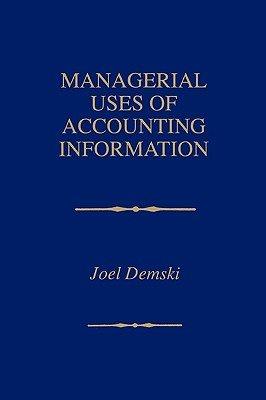product costs and transfer prices We now find Ralph exploring accounting questions in a vertically integrated organization.
Question:
product costs and transfer prices We now find Ralph exploring accounting questions in a vertically integrated organization. The firm has two divisions, Upstream and Downstream. Upstream manufactures a single product. The sole customer for this product is Downstream.
In tum, Downstream uses this product in its own manufaeturing operation, and sells the completed product to various extemal customers.
The question of eoncem is how to aceount for the product that is transferred from Upstream to Downstream. One unit from Upstream is required for eaeh unit of final output by Downstream. Ajust-in-time inventory policy is in force, and the production schedules are therefore coordinated so that inventory is negligible. The firm accounts for this internaI transfer by "charging" Downstream the actual, full eost for each unit.
a] Ralph has recently retumed from a management seminar where the possibility of misleading accounting technique was discussed. This has led to some concem on Ralph's part. Ralph estimates the two divisions' cost stmctures with the following LLAs:
Upstream: CA = 150,000 + 50q, and Downstream: ca = 500,000 + lOOq, where q denotes the eoordinated output level across the two divisions. ca in this setting is the cost in Downstream exclusive of the cost incurred by Upstream in manufacturing the essential component. Now suppose an actual volume of q =
5,0000btains. What is the eost per unit to the Downstream division for each unit of the Upstream produet?
b] Continuing, suppose an extra customer arrives at Downstream's door. This customer will purchase one unit for 160. What is the incremental profit from this extra transaction? Compute this amount from the standpoint of the firm as a whole and from the standpointofonly Downstream's books. Forthe latter, use the existing actual eost per unit in Upstream as the relevant transfer price.
e] Repeat your analysis in [bl above, but for the ease where the units from Upstream are transferred to Downstream using a variable eost system.
d] Ralph is quite disturbed by the above demonstration. As a final eheck the output and eost data listed on the following page are assembled. Regress (i) CA on output; (ii) CH on output; and (iii) CA + CH on output. Notice the latter regression uses the total of local cost pIus transferred-in eost in Downstream as a dependent variable. (Why?)
t q (000) CA (000) Ca (000)
1 14.2 817 2,560 2 12.2 732 1,879 3 9.1 617 1,466 4 12.8 723 1,654 5 3.4 382 778 6 7.0 339 953 7 8.7 576 1,433 8 11.5 276 2,575 9 8.5 920 1,234 to 17.8 913 2,018 11 11.5 1,054 1,806 12 to.O 680 1,022.
e) Now Ralph is really puzzled. The demonstration in [a) and [b) above is conelusiveo The full costing technique causes Downstream to upward bias its estimate of the marginal cost. But the regression results are not consistent with this elaim. Carefully explain the inconsistency between Ralph' s theoretieal demonstration and data analysis.AppendixLO1
Step by Step Answer:






